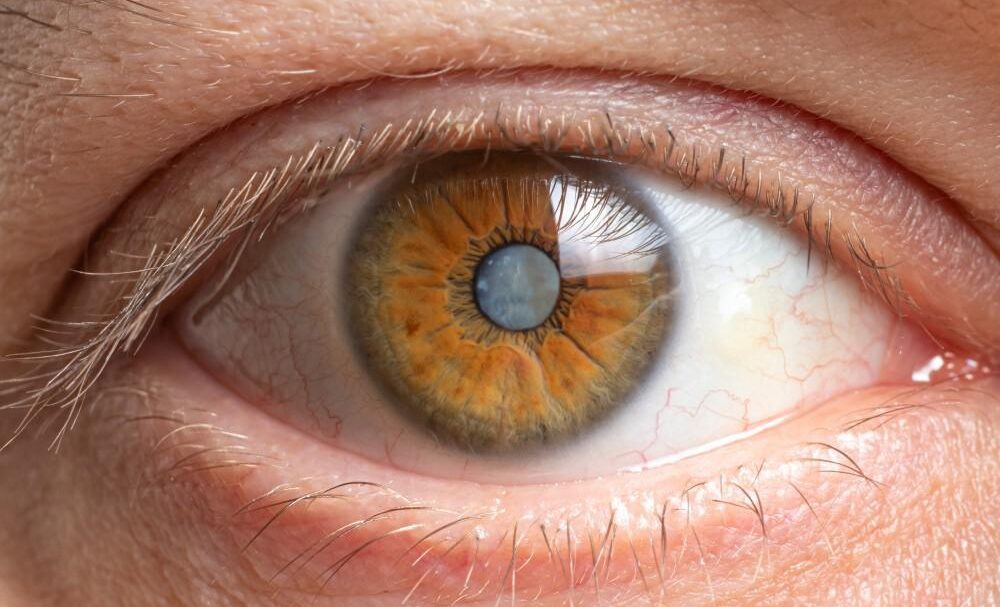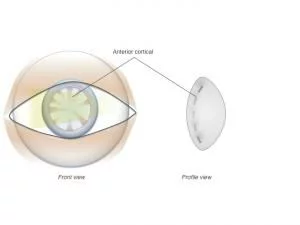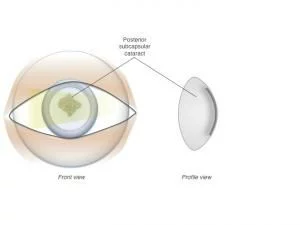Cataracts
Cataracts are very common. They cloud the lens of the eye, affecting vision, and are usually a consequence of ageing. Sometimes a cataract may form in younger patients as a result of trauma, intraocular surgery, repeated ocular inflammation, high myopia, diabetes, etc. Cataracts can also be congenital. All cataracts require treatment if they affect vision.

Types of Cataracts
Nucleosclerotic cataract
Cortical cataract
Posterior subcapsular cataract
Symptoms
You may not notice a cataract at first because they develop gradually over the course of years. Cataracts usually develop in both eyes, but they may each be affected to different degrees. The main symptoms of cataracts are:
•Blurred vision
•Increased glare
•Loss of vision
•Fuzzy, misty or hazy vision
•Difficulty driving at night
•Difficulty reading
•Frequent changes to glasses or contact lenses
Causes of Cataracts
The number one cause for cataract is ageing. The degree does depend on genetics and why the patient has a cataract.
There are other causes – things like having diabetes accelerate your process of cataract formation. Sometimes a cataract may form in younger patients as a result of trauma, intraocular surgery, steroid medicines, repeated ocular inflammation, high myopia, diabetes, etc.
Some unfortunate children have cataracts that they are born with and they cause similar problems as the cataracts in the elderly population. There are rarer causes associated with systemic diseases that your doctor will probably advise you on.
mattis, pulvinar dapibus leo.
Examination for Cataracts
Examination for Cataracts
The nurse first measures your vision for both near and distance with your best glasses on. We then dilate your pupils with eye drops to make the eye examination easier. The drops take about 15 to 20 minutes to work and may blur your vision for several hours afterward. You should not drive or operate machinery until the effects have worn off.
The cataract surgeon will examine your eyes
One of the Ophthalmic examines your eyes using the slit-lamp. This is to determine the type of cataract, measure the eye pressure and look at the retina and especially the macula. If required, special retinal tests and photos are done. Once the diagnosis of cataract is made and you decide on surgery, the ophthalmic consultant will discuss with you the options for local anaesthesia, the type of intraocular lens to be used and whether you want to wear glasses afterwards, for reading, distance or not at all.
The nurse will measure your eyes for the Intra-Ocular Lens
Biometry is done to measure the eye for a customized intraocular lens as once the cataract is removed, the eye will need a new lens. Each lens has a specific power, which is individual to each patient.
a) Mono-focal Lens
The large majority of patients opt for an intraocular lens that is set for distance vision. This is called a mono-focal lens. With this lens type, you will still need to wear reading glasses for close-up tasks.
b) Multi-focal Lens.
Some patients are very keen to be completely free of glasses after their cataract operation. We can offer a multifocal intraocular lens that is set for all distances (reading, intermediate and distance). This should be discussed with your surgeon to see whether it is suitable for you.
c) Toric lens
Some patients have an irregular corneal shape known as astigmatism. We can offer an intraocular lens that can correct for this, known as a toric intraocular lens implant.
More about the different types of Cataracts
Nucleosclerotic cataract is the most common type of cataract and causes blurred vision, increased short-sightedness, and dulling of colours and light. The central part of the lens becomes denser and yellow, the eye becomes more myopic and therefore images dulle

A cortical cataract is a quite common type of cataract where there are radial opaque spokes and can cause glare, distorted, ghosting, double vision, and blurring.

Posterior sub-capsular cataract causes glare and worse vision in bright lights when the pupil constricts.

